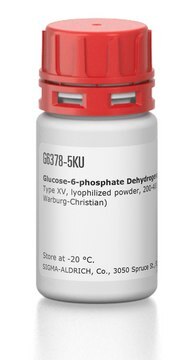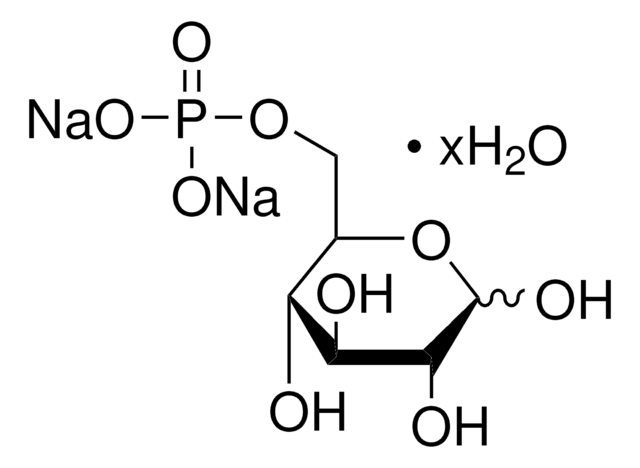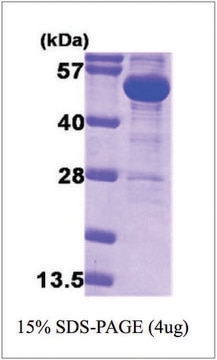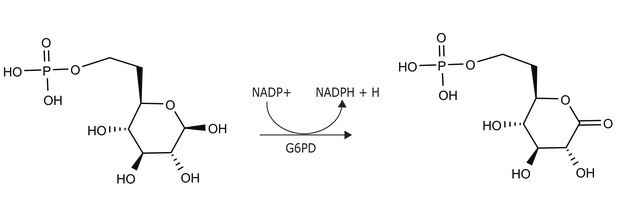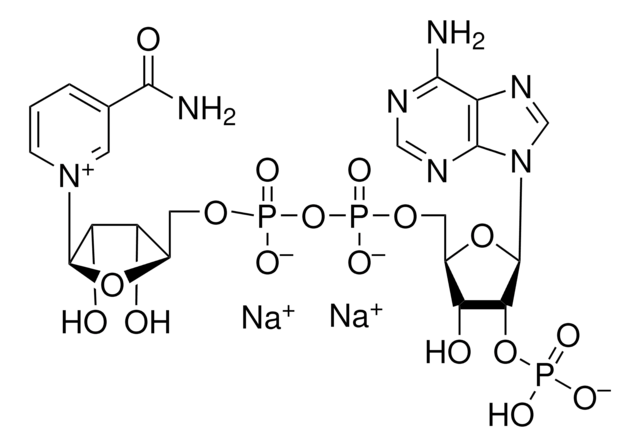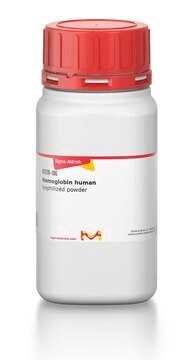SRP6505
G6PD human
recombinant, expressed in E. coli, ≥95% (SDS-PAGE)
Synonym(s):
Glucose-6-phosphate 1-dehydrogenase, Zwf
Sign Into View Organizational & Contract Pricing
All Photos(1)
About This Item
UNSPSC Code:
12352200
NACRES:
NA.32
Recommended Products
biological source
human
recombinant
expressed in E. coli
Assay
≥95% (SDS-PAGE)
form
liquid
mol wt
61.4 kDa (515 aa, 1- 515 aa)
packaging
pkg of 100 μg
concentration
0.5 mg/mL
UniProt accession no.
shipped in
wet ice
storage temp.
−20°C
Gene Information
human ... G6PD(2539)
General description
G6PD (glucose-6-phosphate dehydrogenase) gene is mapped to human chromosome Xq28, and spans 16.2kb. One G6PD monomer is composed of 515 amino acids with a predicted molecular weight of 59,256Da. The active enzyme exists as a dimer, and contains an NADP molecule tightly bound to it.
Biochem/physiol Actions
G6PD (glucose-6-phosphate dehydrogenase) enzyme catalyzes the oxidation of glucose-6-phosphate to 6-phosphogluconolactone, reducing NADP to NADPH. It therefore, catalyzes the first step of hexose monophosphate pathway (HMP). As it is responsible for the oxidation of glucose-6-phosphate, and thus, confers protection against oxidative damage in erythrocytes. Its deficiency is highly heterogenous, with around 190 variants being reported. The deficiency of G6PD was discovered while studying hemolytic anemia. G6PD also results in hereditary nonspherocytic hemolytic anemia.
Physical form
0.5 mg/mL solution in 20 mM Tris-HCl buffer (pH 8.0) containing 20% glycerol, 0.1 mM PMSF, 2 mM EDTA, 2 mM DTT, 200 mM NaCl.
Analysis Note
The biological activity is > 7 units/ml obtained by measuring the increase of NADPH in absorbance at 340 nm resulting from the reduction of NAD or NADP. One unit oxidizes 1.0 μmole D-glucose-6-phosphate to 6-phospho-Dgluconate per min in the presence of beta-NADP at pH 7.4 at 25 °C.
Signal Word
Warning
Hazard Statements
Precautionary Statements
Hazard Classifications
Eye Irrit. 2 - Skin Irrit. 2
Storage Class Code
11 - Combustible Solids
WGK
WGK 3
Flash Point(F)
Not applicable
Flash Point(C)
Not applicable
Certificates of Analysis (COA)
Search for Certificates of Analysis (COA) by entering the products Lot/Batch Number. Lot and Batch Numbers can be found on a product’s label following the words ‘Lot’ or ‘Batch’.
Already Own This Product?
Find documentation for the products that you have recently purchased in the Document Library.
Customers Also Viewed
African glucose-6-phosphate dehydrogenase alleles associated with protection from severe malaria in heterozygous females in Tanzania.
Manjurano A, et al.
PLoS Genetics, 11(2) (2015)
Glucose-6-phosphate dehydrogenase deficiency: a historical perspective.
Beutler E
Blood, 111(1), 16-24 (2008)
G6PD deficiency.
E Beutler
Blood, 84(11), 3613-3636 (1994-12-01)
Saúl Gómez-Manzo et al.
International journal of molecular sciences, 15(11), 21179-21201 (2014-11-20)
Glucose-6-phosphate dehydrogenase (G6PD) deficiency is the most common enzyme deficiency worldwide, causing a wide spectrum of conditions with severity classified from the mildest (Class IV) to the most severe (Class I). To correlate mutation sites in the G6PD with the
Yang Zhang et al.
Cell metabolism, 33(1), 94-109 (2020-11-08)
The emergence of cancer from diverse normal tissues has long been rationalized to represent a common set of fundamental processes. However, these processes are not fully defined. Here, we show that forced expression of glucose-6-phosphate dehydrogenase (G6PD) affords immortalized mouse
Our team of scientists has experience in all areas of research including Life Science, Material Science, Chemical Synthesis, Chromatography, Analytical and many others.
Contact Technical Service